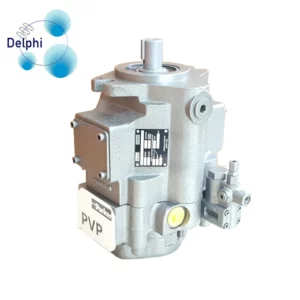Linde likely addresses issues related to fluid viscosity in their PV Series pumps through various design considerations, engineering strategies, and recommended operating parameters.
Here are some approaches they might use:
- Fluid Compatibility: Linde ensures that their PV Series pumps are compatible with a wide range of hydraulic fluids, including those with different viscosities. They may provide recommendations for suitable fluids based on viscosity ranges to ensure optimal pump performance and longevity.
- Viscosity Compensation: Linde may design their PV Series pumps to compensate for variations in fluid viscosity by adjusting internal clearances, component geometries, and operating parameters. This ensures consistent pump performance across a range of operating conditions, including changes in fluid viscosity.
- Temperature Control: Linde addresses fluid viscosity issues by incorporating temperature control features into their PV Series pumps. Maintaining proper fluid temperature helps ensure that viscosity remains within the desired range for optimal pump operation. This may involve integrated cooling systems, heat exchangers, or recommendations for operating temperature ranges.
- Pressure Compensation: Linde may design their PV Series pumps with pressure compensation features to account for changes in fluid viscosity that may affect system pressure. By adjusting pump displacement or pressure settings based on fluid viscosity, Linde ensures consistent system performance and response.
- Filtering and Contamination Control: Linde emphasizes the importance of proper fluid filtering and contamination control to maintain optimal fluid viscosity and prevent pump damage. China PV Series Pump manufacturer They may recommend specific filtration levels and maintenance intervals to ensure that the fluid remains clean and free from contaminants that could affect viscosity.
- Viscosity-Dependent Pump Sizing: Linde may provide guidelines for selecting the appropriate PV Series pump size based on the viscosity of the hydraulic fluid being used. Higher viscosity fluids may require larger displacement pumps to achieve the desired flow rates and system performance.
- Education and Training: Linde offers education and training resources to customers and operators on the importance of fluid viscosity in hydraulic systems and how to properly address viscosity-related issues. This includes information on fluid selection, viscosity measurement, and troubleshooting techniques.
- Field Support and Service: Linde provides field support and service to assist customers in addressing viscosity-related issues with their PV Series pumps. This may involve on-site troubleshooting, fluid analysis, and recommendations for corrective actions to optimize pump performance.
By implementing these approaches and providing support services, Linde ensures that their PV Series pumps are capable of handling a wide range of fluid viscosities while maintaining reliable and efficient operation in various hydraulic applications.
What measures does take to minimize power losses in their F11 Series Motor?
To minimize power losses in their F11 Series Motor, Linde likely employs several engineering strategies and design considerations aimed at optimizing efficiency and reducing energy wastage. Here are some measures they might take:
- Efficient Hydraulic Design: Linde designs the internal components of the F11 Series Motor, such as pistons, cylinders, and valve plates, to minimize frictional losses and maximize energy conversion efficiency. This includes optimizing fluid flow paths, minimizing dead volumes, and reducing pressure drops within the motor.
- High-Quality Materials: Linde uses high-quality materials with low friction coefficients and high wear resistance for critical components of the F11 Series Motor. This helps minimize mechanical losses due to friction and prolongs the lifespan of the motor.
- Precision Manufacturing: Linde employs precision manufacturing techniques to ensure tight tolerances and minimal clearances between moving parts within the F11 Series Motor. This reduces internal leakage and improves overall efficiency by minimizing fluid bypass and internal recirculation losses.
- Sealing Technology: Linde incorporates advanced sealing technology into the F11 Series Motor to minimize internal leakage and prevent fluid bypass between high-pressure and low-pressure areas. Tight seals help maintain hydraulic efficiency and reduce power losses due to leakage.
- Optimized Control Systems: Linde offers advanced control systems and electronic control options for the F11 Series Motor, China F11 Series Motor manufacturer allowing for precise control over motor speed, torque, and displacement. By optimizing control parameters, Linde can minimize energy consumption and maximize efficiency during operation.
- Thermal Management: Linde implements effective thermal management systems in the F11 Series Motor to dissipate heat generated during operation. This helps prevent overheating and reduces energy losses due to thermal inefficiencies.
- Feedback Control: Linde may integrate feedback control mechanisms into the F11 Series Motor to monitor operating conditions in real-time and adjust control parameters accordingly. This allows for dynamic optimization of motor performance and minimization of energy losses under varying load conditions.
- Continuous Improvement: Linde continuously evaluates and refines the design of the F11 Series Motor to incorporate the latest advancements in technology and manufacturing processes. This ongoing improvement process enables Linde to optimize efficiency, reduce power losses, and enhance overall motor performance over time.
By implementing these measures, Linde can minimize power losses in their F11 Series Motor, resulting in a more efficient and energy-saving hydraulic solution for a wide range of industrial and mobile applications.
